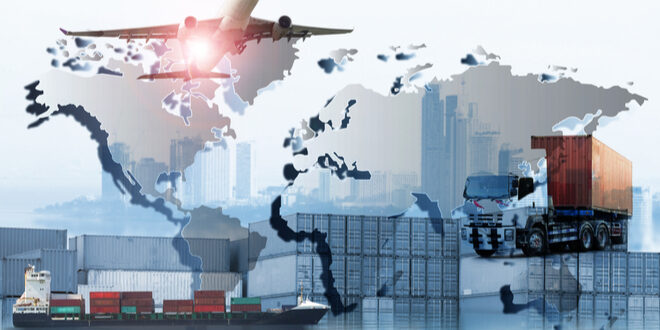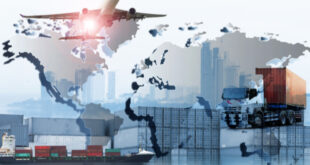By John Tulac
China is one of the world’s oldest civilizations. Its history can be traced back 5,000 years. It was the most civilized culture when Europe was in the Dark Ages. China was once and may soon be again the richest country in the world. While most Chinese are ethnic Han, China’s vast geography makes it home to other ethnic Chines, Tibetans, and others, including many of Turkic descent in the west, such as the Uighurs, who are Muslim. China purports to be monolithic and the center of the world; in reality, China is polycentric and, while a country of rising wealth and power, not the center of the world, despite its ability to menace its neighbors at will.
Through the time of Mao, China’s history for the past few hundred years has been one of steady decline. The Quing Dynasty was one its feeble ast legs, in the late 1800s and was powerless to resist foreign infiltration. China was unstable as warlords fought the Qings and each other for influence and dominance. Chinba’s brief fling with democracy during the time of Sun Yat Sen, was an utter failure. Neither Sun, nor his less-than-able general, Chiang Kai Shek, were able to untie the country and establish true democratic rule. The disunited warlords were no match for the Japanese.
The Long March saved Mao and the Communists from the Japanese and permitted their survival. Following World War II, Chiang proved to be no match for Mao and fled to Formosa (Taiwan). Mao then mismanaged China for decades. Under his ruthless, chaotic, and murderous leadership, millions died, and tens of millions more suffered abject poverty and unspeakable torture and repression. China’s recent past makes China’s present reality, accomplished in approximately five decades since Mao died in 1976 all the more amazing.
In 1976, most Chinese were poor and living in rural areas. Visiting China was like going back in time. There was no middle class. There were serfs, a modest class of skilled workers, and a small cadre of elite in the Communist Party, the government and the military, who ran the country and controlled what little wealth it had.
Once China embraced a form of capitalism, much of which is highly destructive crony capitalism and embraced globalization by joining the World Trade Organization, and promptly massively cheating on its rules, China transformed itself into an economic juggernaut. In doing so, it lifted close to one billion people out of poverty, while flooding the world, principally the Unired States with mostly well-made, inexpensive goods, which increased the standard of living for everyone here as well.
China experienced double-digit growth for many years and its stated single-digit growth achieved between 6 to 6.9% for the past few years is still double or triple the growth rates in the United States and Europe. However, this nevertheless impressive growth rate has materially slowed each year now since at least 2012. China has failed since 2015 to achieve its stated annual targeted growth rate. The effect of which has been a global slowdown in the undeveloped world that had previously grown by selling necessary raw materials to China.
China’s downward economic growth rate will continue with profound impact on both the developing and the other developed economies in the world. China’s leadership is aware of the consequences internally to China, but thus far lacks the skill set and the monetary and fiscal tools to manage the decline. In future columns we will examine the internal and external consequences of this long –term downward trend.
This very brief history helps understand why China is the way it is today and what China wants. Internally, China wants order and continued growth. Externally, China wants respect and raw materials to support its growth.
Given China’s chaotic and destructive history, the quest for order is understandable. Most Chinese have shown a willingness to accept lack of freedoms and many human rights, censorship, repression, and the loss of substantially all privacy in exchange for order and prosperity. Order is primarily tied to prosperity. Where there is not prosperity in China, there is unrest, sometimes great unrest. City dwellers who lose there jobs and do not soon find new employment risk being sent to the countryside where there are no jobs. Those in rural areas today can see even through the filter of state television that they have been largely left behind relative to urban dwellers with apartments and better jobs.
Some repressed minorities and ethnic groups have taken to the streets in protest, risking retaliation. Some have fought with stones and knives and farm implements, since gun control is strict in China. And now, once again, all eyes are on tiny Hong Kong, as pro-democracy citizens seeking to preserve the promised fifty years of one country-two systems, risk everything by taking to the streets where they can be arrested by the police or beaten by gang members being deployed by the Communist Party to intimidate and change the narrative shown to the mainland Chinese from one of peaceful protests to anarchic hooliganism.
Globally, China’s quest for respect is a demand that China be recognized as a Great Power, as it once historically clearly was. The Chinese military is increasingly aggressive in asserting China’s power to the great consternation of its neighbors and the United States. The potential threat to peace and world order is palpable, but until the last couple of years, China has been cautious and judicious in expressing and exercising its power. This appears to be changing, not for the better, which we will examine in greater detail in a future column. At the very least China’s foreign policy and military activity will be directed toward securing the necessary resources to continue to feed China’s economy and demand for raw materials. The Belt and Road Initiative is designed to make friends which securing vital concessions.
Finally, the escalating trade war poses a much more clear and present danger to China than to the United States. A sustained trade war will exacerbate the coming recession. If retaliatory tariffs continue to spread globally, as they have now done between Japan and South Korea, and India and the United States, the world could even see a depression by 2021. Everyone will lose, but he biggest loser will be China. A country that fancies itself a mighty dragon might then behave like a cornered rat to the danger of all.

John W. Tulac is an international business attorney practicing in Claremont, adjunct professor of law at University of La Verne College of Law (retired), and Lecturer Emeritus (retired) at Cal Poly Pomona. He is peer recognized as preeminent in international business law and holds the highest ratings for competence and ethics from the Martindale Hubbell National Law Directory.
 IE Business Daily Business news for the Inland Empire.
IE Business Daily Business news for the Inland Empire.


